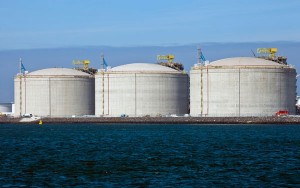 Natural gas futures were lower during early trade in Europe today. Traders await the key Energy Information Administration (EIA) report, due later today, as analysts expect another three-digit injection.
Natural gas futures were lower during early trade in Europe today. Traders await the key Energy Information Administration (EIA) report, due later today, as analysts expect another three-digit injection.
Front month natural gas futures, due in August, were down 0.68% at the New York Mercantile Exchange to trade for $4.091 per million British thermal units at 9:02 GMT today. Prices ranged from $4.087 to $4.110 per mBtu. The contract added 0.54% yesterday, leveling the price change this week.
While gas prices may deteriorate for the next three weeks on mild summer weather, “we think we will see a relatively significant correction by year-end,” Teri Viswanath, director of commodities strategy at BNP Paribas SA in New York, said for Bloomberg.
NatGasWeather.com suggested an injection of 96-101 Bcf will be reported in this week’s EIA log later today, about 25 Bcf more than the 5-year average gain for the reported week. However, next week’s build up is suggested to be some 45-50 Bcf above the average, which would be the biggest gain this summer season. A Bloomberg survey suggested an injection of 100 Bcf this week.
Previously, the EIA reported a sizable output increase at the Marcellus shale deposit in the US Northeast, as gross output from the region will average 15.235 billion cubic feet a day this month, up 28 percent from a year earlier.
US weather outlook
NatGasWeather.com reported on Thursday that the cold blast from Canada has pushed deep into the southern US, cooling a significant portion of the country. Readings behind the cool front are projected to be some 15-20 degrees Fahrenheit below average at places. Meanwhile, some rare localized heating demand may occur in the Midwest, after the blast passed through. The extreme southern and the western US remain in the grips of strong and resilient high pressure, supporting the moderately high temperatures. Later this week, higher pressure will be coming to the Midwest and Northeast as well, normalizing temps after the cold Canadian blast. Cooling demand over the next seven days will probably be low.
In the 8-14 day outlook, NatGasWeather.com projected a neutral trend for the US. Higher pressure will be returning to the northeastern half of the US after the cooler Canadian system passes by early in the projected period. However, more blasts will be pushing southwards into the Northeast and Midwest later in the period, probably lowering temps again.
According to AccuWeather.com, New York will be slightly cooler than normal today, with temperatures between 66 and 81 degrees Fahrenheit, a few below average. It will be mostly sunny today and for the remainder of the week, though temps will remain relatively unchanged at slightly below-seasonal levels. Chicago will be sunny, though cooler-than-normal today, with readings ranging 62-75, some 10 degrees below average. Readings will be climbing for the rest of the week, though temps will probably remain below-normal through to next week.
In the South, Houston will see slightly cooler weather today, with readings between 78 and 88 Fahrenheit, a few degrees below average. Thunderstorms are bound for today and the following few days, while temperatures will probably remain little changed. Over on the West Coast, Los Angeles will be sunny, though cooler than normal today, with temperatures ranging 63-76 degrees, a few below average. Readings will probably remain at this level for the rest of the week, before rising to above-average next week.
Technical view
According to Binary Tribune’s daily analysis, in case natural gas for settlement in August penetrates the first resistance level at $4.149 per million British thermal units, it will encounter next resistance at $4.178. If breached, upside movement will probably attempt to advance to $4.211 per mBtu.
If the energy source drops below its first resistance level at $4.087 per mBtu, it will see support at $4.054. If the second key support zone is breached, the power-station fuel’s downward movement may extend to $4.025 per mBtu.





